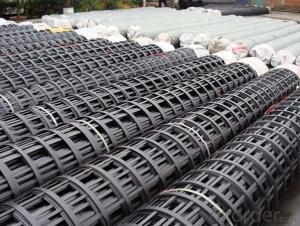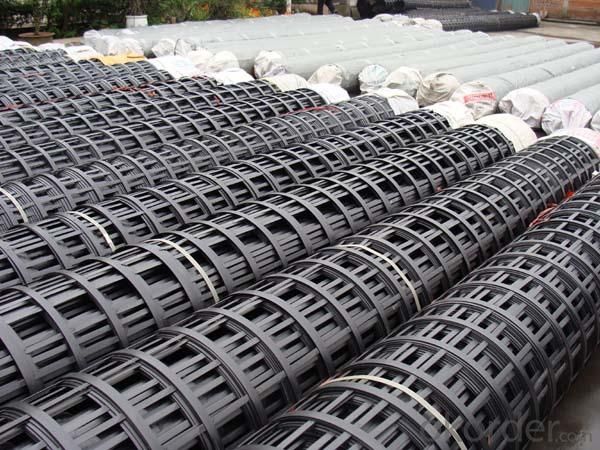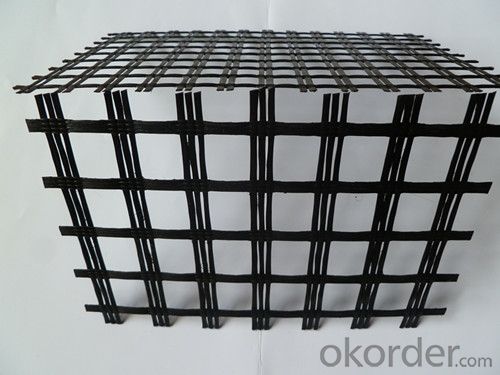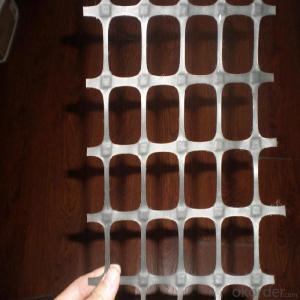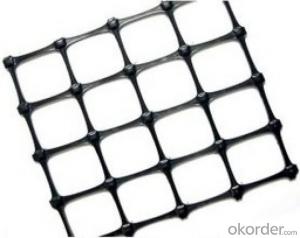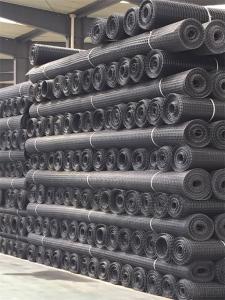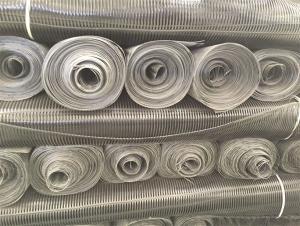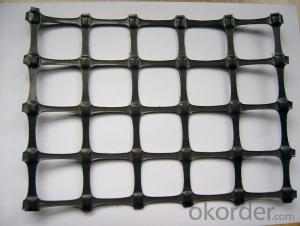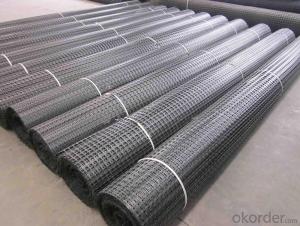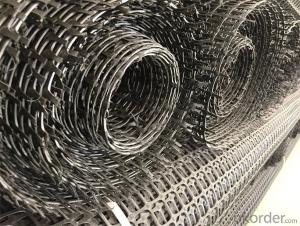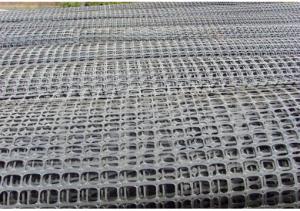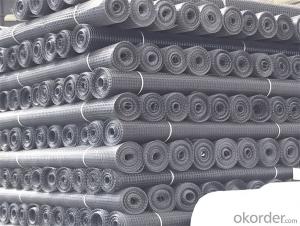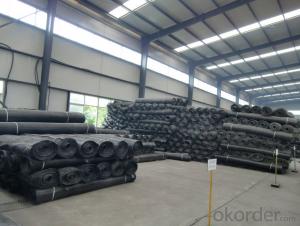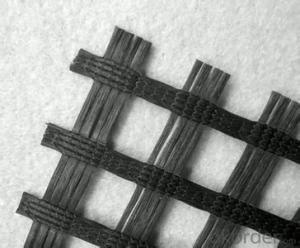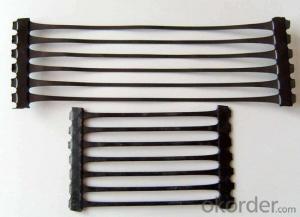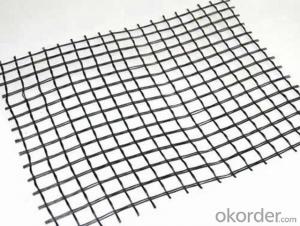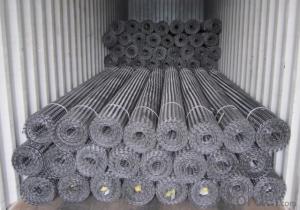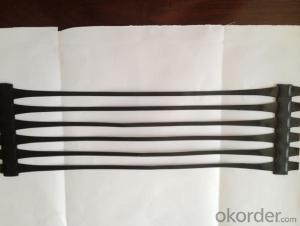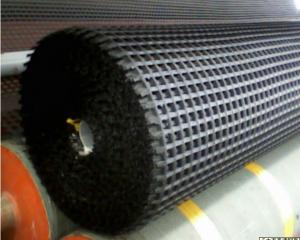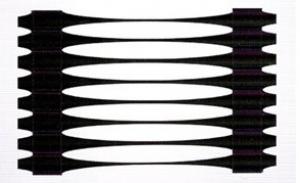Tencate Mirafi Biaxial Geogrid for Construction Reinforcement
- Loading Port:
- China main port
- Payment Terms:
- TT or LC
- Min Order Qty:
- 20000 m²
- Supply Capability:
- 2000000 m²/month
OKorder Service Pledge
OKorder Financial Service
You Might Also Like
1. PP Biaxial Geogrid Description
PP biaxial geogrid It is produced through the process of extruding, punching, heating, longitudinal stretching and transverse stretching.
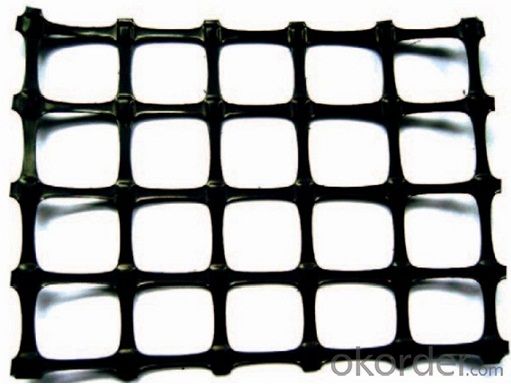
2. PP Biaxial Geogrid Specification
Tensile Strength: 15KN-15KN, 40KN-40KN, 50KN-50KN, etc
Roll Size: 3.95x100m, 2x50m, as request.
3. PP Biaxial Geogrid Application
1) Coal mine channel.
2) Slope protection in tunnel and expressway.
3) Anti-seismic reinforcement of buildings.3. Plastic Biaxial Geogrid Properties
4. PP Biaxial Geogrid Specification
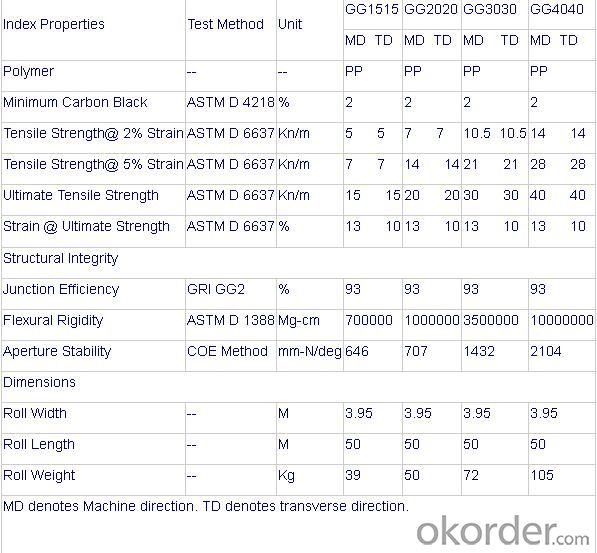
FAQ:
Q:How about the delivery time?
A:Lead time since receipt of 30% T/T deposit payment: 3 weeks.
Q:What kind of payments does jenor support?
A:T/T, L/C, Cash are accepted.
Q:What's are the MOQ?
A:We can according to your condition to set the MOQ.
And we can provide you samples for quality inspection.
Q:Do you charge for the samples?
A:Accordeing to our company policy, the samples are freee, we only charge the freight fee. And we will return the freight fee If you set the order .
Q:Can you produce the product according to customers' requirements ?
A:Sure, we are professional manufacturer, OEM and ODM are both welcome.
- Q: Glass fiber grille material.
- Mesh structure material made by certain knitting technology
- Q: Can geogrids be used in reinforced soil slopes?
- Yes, geogrids can be used in reinforced soil slopes. Geogrids are commonly used in reinforced soil slopes to enhance stability and prevent slope erosion. They provide tensile strength to the soil, improving its load-bearing capacity and preventing slope failure.
- Q: What is the lowest price of two-way plastic geogrid?
- General price to 25KN between 3.6-4.5, 30KN in about 5.5
- Q: How are geogrids used in road construction?
- Geogrids are used in road construction to improve the stability and strength of the road. They are placed between different layers of the road, such as the subgrade and the base course, to distribute the load and prevent the movement of soil particles. This helps to increase the road's durability, reduce deformation, and enhance its overall performance.
- Q: What is the difference between a uniaxial and a biaxial geogrid?
- A uniaxial geogrid is designed to provide strength and stability in one direction, typically in the longitudinal axis. It is used to reinforce soil or other materials in applications such as road construction, retaining walls, and embankments. On the other hand, a biaxial geogrid is designed to provide strength and stability in both the longitudinal and transverse directions. It offers enhanced reinforcement capabilities and is commonly used in applications where multidirectional support is required, such as steep slopes, ground stabilization, and pavement systems.
- Q: Glass steel grille is how to produce
- Production process of FRP grid:Preparation of mold - Preparation of mixed resin - glass fiber yarn - (or at the same time) pouring resin and exhaust bubble - mold heating, product curing - mold - finishing - Inspection packaging.
- Q: Can geogrids be used in reinforcement of soil-bentonite mixtures?
- Yes, geogrids can be used in the reinforcement of soil-bentonite mixtures. Geogrids are commonly used in geotechnical engineering to enhance the stability and strength of soil structures. When placed within soil-bentonite mixtures, geogrids can provide additional tensile strength and improve the overall performance of the reinforced material.
- Q: Are geogrids easy to install?
- Yes, geogrids are generally easy to install. They are lightweight, flexible, and can be easily rolled out and secured in place with stakes or anchors. The installation process usually involves basic site preparation and minimal equipment, making it relatively straightforward for both professionals and DIY enthusiasts.
- Q: Are geogrids suitable for use in road widening projects?
- Yes, geogrids are suitable for use in road widening projects. Geogrids are commonly used in road construction and rehabilitation projects to improve the stability and strength of the road base. They provide reinforcement by distributing loads and reducing stress on the road surface, making them an ideal solution for road widening projects where additional support is required.
- Q: Fiberglass grille price?
- Fiberglass geogrid price is divided according to the model, fiberglass geogrid models are 30KN, 40KN, 50KN, 60KN, 70KN, and so on, the maximum can reach 200KN. Fiberglass geogrid models are as follows:
Send your message to us
Tencate Mirafi Biaxial Geogrid for Construction Reinforcement
- Loading Port:
- China main port
- Payment Terms:
- TT or LC
- Min Order Qty:
- 20000 m²
- Supply Capability:
- 2000000 m²/month
OKorder Service Pledge
OKorder Financial Service
Similar products
Hot products
Hot Searches
Related keywords
